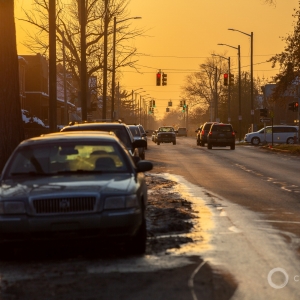The Stream, October 14, 2020: Ocean Temperatures Could Predict Colorado River Flow
YOUR GLOBAL RUNDOWN
- A new study produces a model that could predict Colorado River water flow.
- A team of researchers from the University of Minnesota are testing local wells for evidence of Covid-19 in drinking water.
- Over 100,000 homes in Vietnam have been flooded from recent rains.
- The benefits of decommissioning aging U.S. dams may outweigh the drawbacks.
A collapsed dock along the Detroit River reveals an illegal stockpile of limestone gravel.
“With rising water levels due to climate change, we have a duty to make sure that we’re thinking proactively so that this never happens again.” – Justin Onwenu, an organizer with the Sierra Club. The Michigan Department of Environment, Great Lakes and Energy (EGLE) fined the owner of Revere Dock LLC $60,000 for violating the Natural Resources and Environmental Protection Act, reports Detroit Metro Times. An illegal stockpile of limestone gravel was found along the Detroit River after a dock collapsed, allowing contaminated soil into the Detroit River. The city was unaware of the stockpile for more than four months last year, which was being piled on land used to manufacture uranium-based products in the 1940s and later became a dumping ground for other toxins. Environmental activists, like Onwenu, are working with the city to create protective measures, including an ordinance to regularly inspect sites along waterways.
THE LATEST WATERNEWS FROM CIRCLE OF BLUE
Lack of Utility Data Obscures Customer Water Debt Problems – Inadequate data hampers understanding of who is most affected by overdue water bills.
HotSpots H2O: Fires in the World’s Largest Wetlands Decimate Wildlife and Livelihoods – The Pantanal wetlands are on fire. Since early this year, nearly a fifth of the Brazilian ecosystem, over 14,000 square miles, has burned in wildfires just south of the Amazon rainforest.
More Research Is Needed To Understand Risk Of Covid-19 In Drinking Water
Results from an emergency sampling project out of the University of Minnesota last summer could lead to a larger, more thorough study on coronavirus in drinking water, the Star Tribune reports. The researchers behind the project believe that if the virus can be found in septic tank systems, it may eventually find its way into groundwater systems too. This could pose a threat to those who rely on private wells for their water supply, which accounts for around 1 million Minnesotans. The private wells tested were also clear of E. coli and the bacteria that cause Legionnaires’ disease. Nearly $600,000 has been recommended for the team to conduct more research but legislators will need to approve the funding before researchers move forward.
In context: Enthusiasm But Obstacles in Using Sewage to Monitor Coronavirus
TODAY’S TOP STORIES, TOLD IN NUMBERS
109,000 HOMES
Al Jazeera reports rain from storm Nangka in Vietnam have flooded 109,000 homes so far. The government have reported 23 deaths, while 14 people remain unaccounted for. Almost 46,000 have been evacuated and authorities warn that the rain will only continue to pour down on the country. Tropical Storm Linfa, which weakened to a depression by the time it hit Vietnam, worsened the situation in some regions like Thua Thien Hue, where a landslide reportedly buried 13 construction workers on Monday. Vietnam, where 132 people have died from natural disasters in the past year, is prone to powerful and devastating storms because of its long coastline.
1,722 DAMS
Dams throughout the U.S. are aging rapidly and between 1912 and 2019, 1,722 dams had been removed from U.S. waterways. Some experts suggest that the removal of these dams not only improves river quality, restores wetlands and fosters biodiversity in waterways, but is also more cost-effective than dam repairment, according to reporting from Great Lakes Now. The decommissioning of the Hogansburg Dam, which came down at the end of 2016, could serve as a model for future dam removal and a team of researchers is working on studies to understand how wildlife in the area has benefitted.
In context: Country’s Aging Dams, a ‘Sitting Duck,’ Facing a Barrage of Hazards
ON THE RADAR
Scientists from the University of Utah have created a new tool to predict drought and water flow into the Colorado River years in advance. Their study, published in Communications Earth & Environment, shows that water scarcity in the Colorado River can be associated with signs of warming and cooling sea surface temperatures. The authors of the study say their model can not only be used to mitigate agricultural and wildfire risks and create proactive drought management practices but could become a model for other major river basins in the western U.S. as well.
Jane is a Communications Associate for Circle of Blue. She writes The Stream and has covered domestic and international water issues for Circle of Blue. She is a recent graduate of Grand Valley State University, where she studied Multimedia Journalism and Women, Gender and Sexuality Studies. During her time at Grand Valley, she was the host of the Community Service Learning Center podcast Be the Change. Currently based in Grand Rapids, Michigan, Jane enjoys listening to music, reading and spending time outdoors.







Leave a Reply
Want to join the discussion?Feel free to contribute!